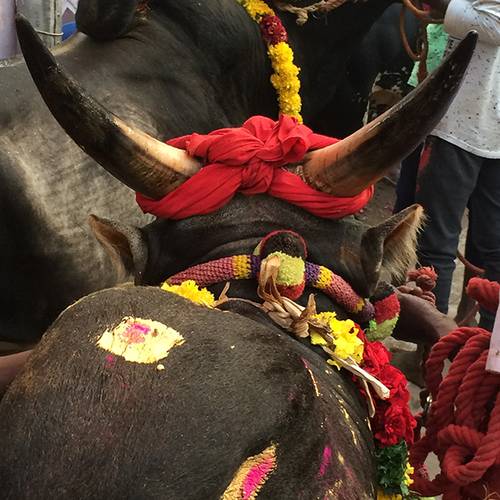 jallikattu - the concept |
 JALLIKATTU Since pre-Christian times JALLIKATTU takes place in the Southern Indian state of Tamil Nadu during the time of the harvest festival Pongal. Nowadays a larger number of men attempt, in the process, to hold on to a richly decorated zebu bull, which storms out of a chamber. The men have to hold on to the hump of the animal for a certain time or distance. Each of those men who are pressed in front of the chamber and who are dressed in numbered jerseys wants to win. If a man has succeeded, he will be immediately showered with prices – mostly objects. It often comes to chaotic scenes in this crowd in front of the chamber, for instance, when a bull returns from the track and muscles in. Up to 800 bulls complete the course in one place on this holiday. If the bull wins, the breeder receives the price. Often, he is a fighter himself. Jallikattu is a spectacle with thousands of spectators, which is now, after years of prohibition, more popular than ever. The origin of the tradition lies, on the one hand, in the selection of these zebu bulls for breeding. On the other hand, it lies in the fight of the men for their position in society. The SOILS for this project come from the bull stables in the Jallikattu towns of Avaniyapuram, Palamedu and Algananallur. They are supplemented by two SOILS from the temples of Sri Meenakshi in Madurai and Malaykunda in Vempalli. |
